Battle Royale: Limited Edition
Battle Royale is one of those films that arrived in the UK without a great deal of publicity and it snuck under the radar before becoming a huge cult hit and one of the most loved and respected contemporary Japanese films. Directed by Kinji Fukasaku who was, for those who know his work, one of the greatest Japanese filmmakers who ever lived, and that includes people like Akira Kurosawa, Yasujirō Ozo and Kon Ichikawa. I can't remember how I first came across Battle Royale but it blew me away on first viewing and I immediately bought the DVD which I watched several times in a short period before putting it on my regular 'to watch' list.
Then, a couple of months ago, came the news that I had been hoping for but not expecting: Battle Royale was to be released on Blu-ray with a wealth of extra features and Arrow Video, who were handling the release, were going to pull out all the stops to make the release as definitive as possible. As with most releases, it always remains to be seen how 'definitive' a Blu-ray set is until you've seen it with your own eyes and it's taken the numerous hours to go through this set.
Set at the end of the 20th century, the film begins with a brief expository section saying that Japanese society is crumbling as unemployment is skyrocketing and young people are boycotting school which has led to a massive increase in crime rates. With adults worrying about the future and what is happening to their children, drastic times call for drastic measures and the Millennium Education Reform Act (more commonly known as the BR Act) was passed which allows for a random ninth-grade class to be taken and pitted against each other in a Battle Royale which takes place over three days. At the end of the allotted time period, the last person left standing is set free but, if there is no 'winner' then they all die.
We then have a flashback to a seventh-grade class which is out of hand and one of the pupils stabs his teacher in the buttock, causing him to leave teaching altogether. Two years on and they are on a bus on the way to a class trip. The more observant of the teachers is slightly puzzled by the number of military jeeps and personnel they pass along the way and, when they enter a tunnel, everyone mysteriously falls asleep. One of the male students, Shuya Nanahara, awakens to find that everyone is asleep apart from the driver and his assistant who are wearing gas masks and, when Shuya tries to ask her what is happening, she whacks him on the head and knocks him out cold.
Waking up in a rather barren room and each wearing a bizarre metal collar, the class are surprised to find that their seventh-grade teacher, Kitano, walks in with several soldiers and begins to tell them what is in store for them over the next few days. When students talk out of turn, they are slapped around the head, have chalk thrown at them or, in one case, are killed by Kitano when he takes umbrage at a girl whispering and throws a knife at her forehead, killing her instantly. He then plays a video in which a young woman tells them where they are (an unnamed and uninhabited island) and what will happen. The island is separated into different sections which will be declared danger zones at various junctures throughout the three-day stay and they are all told that, when their name and number is called, they must grab their backpack and a bag from the Army before heading out to fend for themselves.
Each pack contains some water, food, a torch, a map, compass and a random weapon which, as they learn, varies from a submachine gun to an axe or a pan lid. The idea is to kill your classmates before they kill you and, if you stay in a danger zone, try to escape or do anything else against the rules, the metal collar will be remote detonated, killing you instantly.
Some students can't handle this at all and are found hanging just outside whereas others, such as the two mysterious students who have joined the group, revel in killing and decide to kill their way to victory. Shuya Nanahara is the main character and partners up with a girl, Noriko Nakagawa, who gave him cookies on the way as she has strong feelings for Shuya and they try to stay out of trouble but find that, as the island shrinks and the weakest students are killed off, trouble will eventually find them. With only a pair of binoculars and a pan lid between them, they reluctantly accept the offer of assistance from Kawada who claims to have a plan to get all three of them off the island safely.
Kinji Fukasaku is a director who can make even the most violent film seem artistically important and that is the case with this as it is not just a film about people killing each other but has a smart, satirical subtext and well rounded characters with whom you can either identify or hate depending on your outlook and what you would do in such a situation. The one thing that really stands out about Battle Royale is the unbelievably stylish and over the top violence -- there aren't many movies in which you would find three students being attacked by someone throwing a severed head with a grenade in its mouth through the window! Fukasaku obviously is going for style rather than realism as people can take 10 gunshots to the torso and not lie dead on the floor and, when they are hit with a machete or other sharp weapon, the blood comes spraying out as if from a hosepipe, similar to the methods employed in kung fu B-movies and the Lone Wolf and Cub series of films.
There are several people in the film who are now recognisable amongst general film fans, not just Asian and cult film fans: Takeshi Kitano (aka Beat Takeshi), Chiaki Kuriyama (the mace wielding schoolgirl from Kill Bill: Volume 1) and Tatsuya Fujiwara (from the Death Note films and Kaiji: The Ultimate Gambler) and I wouldn't be at all surprised if Quentin Tarantino cast Chiaki Kuriyama because of her performance in this film -- Kill Bill Volume 1 is dedicated to "Master Filmmaker Kinji Fukasaku".
I have now seen Battle Royale many times now and I never tire of watching it; it is a thought provoking and intelligent piece of filmmaking with no shortage of memorable kill scenes and beautifully choreographed action sequences with bullets flying all over, explosions and one lad being repeatedly stabbed where you really wouldn't want a knife to go!
The Disc
Extra Features
This three disc set comprises two BDs and a DVD with the BDs containing the film in both the original theatrical version and 2000 re-release with some additional scenes and slightly different graphics. The DVD just contains bonus material -- a great deal of Battle Royale-related goodies.
As well as the theatrical cut of the film, disc one contains the original theatrical trailer (in SD) and The Making of Battle Royale: The Experience of 42 High School Students.
The Making of Battle Royale: The Experience of 42 High School Students (52:32, HD) is the same featurette that was included on the previous DVD release but is now in 720p high definition. There is a great deal of behind the scenes footage showing Kinji Fukasaku at work, berating actors for not showing enough emotion, looking in the wrong place or speaking too quickly whilst belying his age and climbing up a steep hill to give direction to two of the actresses who seemed stunned that the director, who celebrated his 70th birthday not long ago, was prepared to walk so far and didn't just stay behind the monitor. There are also impromptu interviews with cast members who are asked what they would do if the situation was real with most of them seeming to go for the option to hide and kill people who come near them.
Disc two contains the Director's Cut and so has the Special Edition Theatrical Trailer (in HD) as well as the following:
TV Spot: Tarantino Version (0:32, HD) is a short TV spot which has a few one-liners from Tarantino saying basically how much he loves the film and recommends that everyone watch it.
Shooting the Special Edition (9:01, SD) shows the additional photography that took place in 2001, six months after the initial shoot wrapped, to film the basketball sequence which recurs throughout the Special Edition.
Takeshi Kitano Interview (11:51, HD) is fairly well conducted with the questions appearing as text on the screen with English subtitles and Takeshi answering them quite well, talking about his own school days, his character in the film and what it's like to work with Kinji Fukasaku.
Conducting Battle Royale with the Warsaw National Philharmonic Orchestra (7:27, SD) is interesting footage of the full orchestra at work, playing Verdi's Requiem, the Fearsome Teacher piece and Kiriyama's Theme (amongst others). It's strange, but when you listen to the music, you don't always think of how it was performed so this behind-the-scenes look at the orchestra and choir at work is an interesting and revealing piece.
The Correct Way to Make Battle Royale Birthday Version (3:09, SD) is probably the most bizarre title for any extra feature I've come across but it basically refers to Fukasaku's 70th birthday and the things you need to shoot the film including a drink, a script and a weapon (in this case, a megaphone/bullhorn) with some footage of the cast and crew singing Happy Birthday to the great director and presenting him with a cake.
Tokyo International Film Festival Presentation (4:37 SD) is, unsurprisingly, all about the film's premiere where members of the cast (and Fukasaku) make speeches before the film was screened to the packed out audience. There are several mentions of the 15 certificate the film was given in Japan which seems slightly strange considering the 18 certificate the film was given by the BBFC in the UK.
On to disc three on which the majority of the bonus features have been placed.
The Correct Way to Fight in a Battle Royale (2:35, SD) features that chirpy Japanese woman in the red BR first giving the instructions that are shown to the students when they first awake on the island. Only without interruptions from students or a teacher throwing a knife into someone's forehead for whispering!
Royale Rehearsals (7:11, SD) is, as the title suggests, rehearsal footage of the students in casual dress going through their lines with Fukasaku giving them direction in what appears to be a school hall. It then moves on to a high school in Tokyo in which Fukasaku is auditioning some 800 people for the 42 roles that will be filled with high school students and actors of around that age. There is also footage of stunts being practiced and actors going through various scenarios acting opposite Fukasaku and then the other actor.
Masamichi Amano Conducts Battle Royale (9:46, SD) is more footage of the composer with the Warsaw Philharmonic Orchestra as they go through a great selection of classical music that, on its own, is a wonderful listen and makes you realise what a great choice was to have music by Strauss, Bach and Verdi on an extremely violent film as the juxtaposition works perfectly.
Special Effects Comparison (4:17, SD) comprises plenty of before and after shots of people being shot or when their metal collar explodes with the various CGI effects that go into turning someone fitted with squibs and being shot with a toy gun to someone being shot with blood flying everywhere. The piece is accompanied by Johann Strauss' The Blue Danube which seems rather incongruous when you are watching someone's neck explode, someone being riddled with bullet holes or having a knife pulled out of their forehead!
Behind the Scenes Featurette (12:09, SD) is another Japanese featurette that looks at the film from its literary origins to the finished film and what the actors think about it and what they anticipate the viewers will take from the movie. It works well with the longer making of from Disc One but is a well made and revealing piece in its own right.
Framing on Set (11:00, SD) shows Fukasaku at work as he talks to the actors and supervises the cameras and other technical equipment and a piece works well with the other behind the scenes featurettes as they complement each other well.
Trailer Gallery (23:09, SD) isn't actually a load of promotional pieces for Battle Royale, but for Kinji Fukasaku's brilliant yakuza drama/thriller series Battles Without Honor and Humanity. If you haven't seen these then you should really try and get hold of them with the best at being the American R1 collection that comes in a tin with a bonus disc.
In addition to all of these, the Limited Edition set comes with a 32 page comic, a 36 page booklet with an article by Tom Miles, an interview with Kinji Fukasaku an article by Jay McRoy, an extract from Koushan Takami's novel and original promotional material and more. There is also a reversible foldout poster, another booklet with concept artwork and drawings for the Limited Edition set and several art cards with stills from the film.
The Picture
As with most, if not all, Blu-ray releases, I expected this to have an incredibly high visual quality which is far better than anything I'd ever seen before. For the most part, that's exactly what the disc contains with superb colours and skin tones but I was disappointed by the contrast levels which tend to be grey rather than inky black. I'm not sure whether this is down to the original negatives or a problem with the remastering process (some Japanese studios are notoriously hard to negotiate with).
Anyway, this is a step up from the DVD, just not as big an improvement as I'd hoped for -- the film is so beautifully directed, edited and composed that it really deserves the finest picture quality available and only those who have seen this in a cinema will know how the picture on this disc compares to that on film stock.
Battle Royale is a tremendous visual spectacle despite the slightly dated visual effects and there aren't many films that are widely respected and loved that have blood spraying everywhere and have 15-year-old schoolchildren killing each other as the main theme. Kinji Fukasaku, who has made several great films, particularly the Battles without Honour and Humanity series, really knows how to setup and shoot an action sequence and there are myriad ones here that are either funny, heart breaking or genuinely exciting.
The Sound
Both the theatrical and director's cuts have a DTS-HD Master Audio 5.1 soundtrack which really does a tremendous job of presenting the dialogue, score and action sequences with great separation, clarity and muscle.
I normally associate LFEs with explosions, heavy vehicles and natural disasters like earthquakes but they turn up here in the strangest of places such as when Chigusa stabs Niida in the groin. Other sequences use the front and rear surrounds to good effect with the gunshots and bullets coming from all around you and explosions using at least three speakers ensuring that the sound encompasses you, fully drawing you into the action and the students' plight.
The scored music really suits the film and I can't imagine another form of music, such as contemporary rock, doing as good a job as the slightly soothing and relaxing compositions like Bach's Air on a G String juxtaposes completely with the images on screen and only serves to heighten the violence and bloodletting, which I imagine was the whole point. If you're anything like me, every time you hear Verdi's Requiem, you'll think of this film as, for film fans at least, they have become inextricably linked so the choice of that piece of music was a stroke of genius.
The subtitles are brilliantly clear and easy to read although I'm in no position to vouch for how faithful they are (or otherwise) to the Japanese.
Final Thoughts
Battle Royale is a brilliant film in which the violence isn't actually the point -- it's a film about what ordinary people will do in an extraordinary situation and, as one of the taglines asks, 'Could You Kill Your Best Friend?' The performances by the entire cast are extremely realistic and plausible, from those who are only on screen for about five minutes to the main roles performed by Beat Takashi, Aki Maeda, Tatsuya Fujiwara and Chiaki Kiriyama. For the most part you almost forget that you're watching a film as the interactions between the actors (who are mostly high school age) are just like the sort of things that ninth graders would say to one another in that situation.
As far as this set goes, it is just about the definitive edition of Battle Royale with both versions of the film and hours of extra material. If it wasn't for the slightly disappointing contrast levels, it would practically be a shoe-in for release of the year but, even so, it is still a brilliant release. The fact that the Limited Edition set comes with a comic book, two booklets and a reversible poster, plus some postcards that are exclusive to this Limited Edition release (there are only 10,000 available) make it a very special set indeed and one that every Battle Royale fan will either buy or hope to receive as a Christmas present.
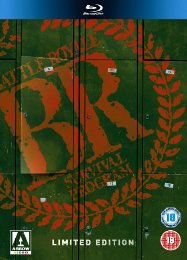
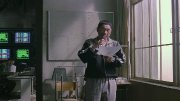
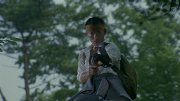
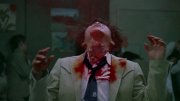
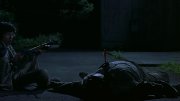
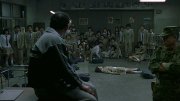
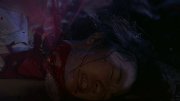
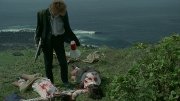
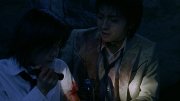
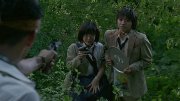
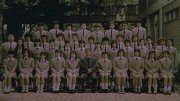
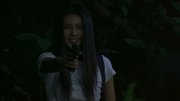
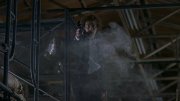
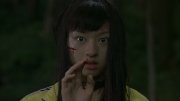

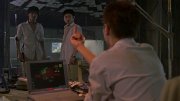


















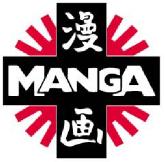
























Your Opinions and Comments
Be the first to post a comment!